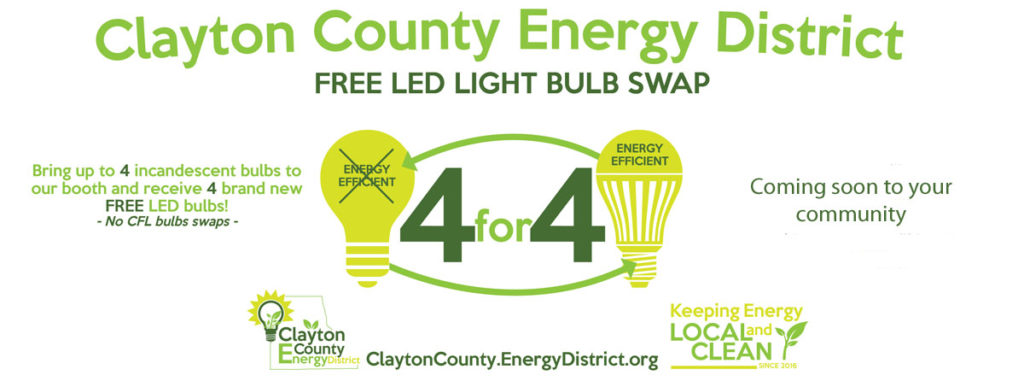
Because, widespread use of LED lighting has the greatest potential impact on energy savings, since September 2017 the Clayton County Energy District (CCED) in concert with their mission, “Keeping Energy Local, Clean & Fair” hosts FREE LED Light Bulb Swaps, at various events throughout the county.
County residents are encouraged to bring their high energy using incandescent bulbs in trade for energy efficient LED bulbs. Participants will be swapped for up to (4) 60 W equivalent LED bulbs, compliments of the CCED.
Energy District program coordinator, Joleen Jansen says, “The light bulb swaps are a fun way to stimulate the local energy market and educate the local population. We purchased the energy efficient LED bulbs locally and are trying to stimulate local resident energy efficient behavior. Less money spent on energy bills, means more money for the local economy and a healthier environment. Everyone is welcome and we encourage you to stop by and learn about the Energy District and swap your light bulbs!”
Participants must bring an incandescent bulb to receive an LED bulb; and up to 4 bulbs will be exchanged per household. CFL bulbs (the curly bulbs) will not be exchanged.
According to the US Department of Energy, Residential LEDs — especially ENERGY STAR rated products — use at least 75% less energy, and last 25 times longer, than incandescent lighting. By 2027, widespread use of LEDs could save about 348 TWh (compared to no LED use) of electricity: This is the equivalent annual electrical output of 44 large electric power plants (1000 megawatts each), and a total savings of more than $30 billion at today’s electricity prices.
FAQ: Isn’t this wasteful? Why not just give away these bulbs wait for the incandescent bulb to burn out?
Answer: Because we are not landfilling but recycling the bulbs this is not a wasteful concept. Incandescent bulbs burn at 335 degrees Fahrenheit while LED’s burn at 87 degrees. An incandescent bulb costs around 1.50 a year to run while an LED costs around .37cents/yr. In an average lifespan for one light socket 145 incandescent bulbs will be used compared to three LED’s. Then when it comes to the quantity of light produced an incandescent will produce 15 lumens/watt while a LED produces 45 lumens/watt. Ultimately, LED conversions leads to about a 15 to 20% reduction in kilowatts consumed which can lead to real savings. So immediate LED transitions make sense when it comes to the local economy. Essentially, why wait to pay less?
